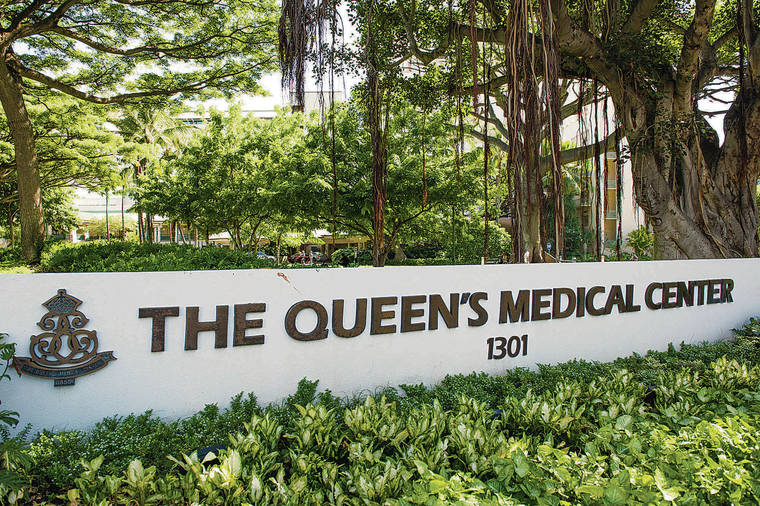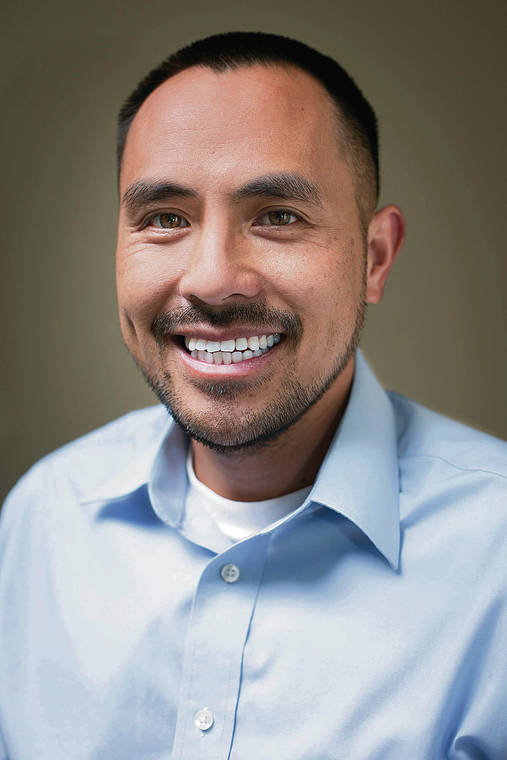Queen’s Medical Center changing policies after second COVID cluster

STAR-ADVERTISER / 2018
Queen’s Medical Center

COURTESY PHOTO
“We do a great job in terms of notification of patients. … The challenge for us is during discharge.We frankly didn’t have the bandwidth to get to all our visitors. Moving forward, we’re ramping up with family members and visitors. They deserve to be notified.”
Dr. Julius Pham
Chairman of Queen’s COVID-19 committee


A COVID-19 outbreak occurred in two clusters at The Queen’s Medical Center, where the family of a 75-year-old patient who tested positive after discharge said they were never told she was on one of the affected floors.
The hospital told the Honolulu Star-Advertiser the clusters occurred in a cardiac unit located on floors 3 and 6 of Queen Emma Tower, and the second cluster was on the fourth floor of the Pauahi Tower.
The woman’s family said she tested positive for COVID-19 on Friday, three days after her release from Queen’s.
Stewart Chong said his mother, whose name is not disclosed because of privacy concerns, was transferred to a health care facility after her stay at Queen’s and the hospital also failed to inform that facility.
Queen’s had reported on Jan. 6 that there was a single cluster at the medical center, but hospital officials told the Honolulu Star-Advertiser on Tuesday that the outbreak there was actually in two areas.
Officials said they did not inform patients who had been receiving care in units where clusters were identified unless they tested positive. They also did not inform the receiving health care facilities of that fact, but say they have been following up on those patients, who must test negative before being released.
Don't miss out on what's happening!
Stay in touch with breaking news, as it happens, conveniently in your email inbox. It's FREE!
The number of infected patients has risen to 17 from the initial report of 12 patients and 27 caregivers, which includes physicians, nurses, nurse’s aides and therapists.
Although unable to comment on the specific patient’s case due to medical privacy laws, The Queen’s Health Systems’ officials said they have had discussions over the weekend and have begun to make changes after the issues Chong raised Saturday were sent by the newspaper to its public relations team.
In a written response, the hospital said: “In hindsight, we recognize that there was a gap in our processes that resulted in communication that was not at the level we hold ourselves accountable for and that our patients deserve.
“As an organization committed to continuously learning, we have made immediate changes to improve our processes including expanding the number of clinicians available to contact individuals and respond to their questions.
“Every concern is very important, and we apologize for not living up to our own high standards in this case.”
Dr. Whitney Limm, Queen’s chief physicians officer, said that to patients with negative test results, “we did not say, ‘You were in a unit that had other positives.
“If someone tests negative, the hospital staff now does follow-up checks after a patient is discharged…. “That is something (… among) the gaps we are closing,” he said.
The hospital said its teams have taken the following steps: completed broad surveillance of all in-patients; increased contact tracing for all affected patients and staff; and reinforced safety protocols, including Personal Protective Equipment usage and cleaning.
Chong, his 81-year-old father and his sister visited his mother at the Pauahi Tower during her eight-day stay, but were never informed they may be at higher risk for contracting the virus.
Chong said Saturday he was frustrated by the lack of timely communication and transparency by Queen’s on whether Pauahi Tower was a hot spot for the virus. He said he was concerned about possibly spreading it to other family members.
“Given how quickly communication has to happen to prevent the spread, clearly they weren’t equipped with proper communication procedures to prevent that from happening,” Chong said. “I needed to get answers and was exasperated.”
After learning of his mother’s positive test result late Friday, the three got tested Saturday.
Chong made calls to Queen’s first on Friday, calling the hospital’s COVID Infoline. He didn’t get a call back until about 5 p.m. Saturday. “It was an emotional few days for sure,” he said.
Chong’s sister received a presumptive positive result Monday, but received a negative result Tuesday. Chong and his father received negative results Sunday.
Chong said when he last tried to visit his mother Jan. 4, he was told by a staffer that the Pauahi Tower fourth floor was closed and that the hospital was restricting visitors due to the rise in community spread. When he learned Jan. 6 of the outbreak through the news media, he began to suspect that may have been the reason for the closure.
The hospital said in a written response: “Queen’s like any other health system is not infallible. …In our fight against this unprecedented disease, we were not perfect, and in retrospect, we believe we could have improved our communication to those involved.”
Dr. Julius Pham, who is chairman of the hospital’s COVID-19 committee, said, “We do a great job in terms of notification of patients. … The challenge for us is during discharge.
“We frankly didn’t have the bandwidth to get to all our visitors,” he said. “Moving forward, we’re ramping up with family members and visitors. They deserve to be notified.”
Limm said the question for the COVID committee is what threshold number of cases within a unit constitutes a cluster.
Pham said currently two cases is considered a cluster and the team goes into cluster surveillance.
The hospital is using the same strategy as in restaurants, where visitors’ contact information is taken, so that they can be notified in addition to patients and caregivers.
Going forward, Pham said, “Absolutely we’re going to notify our patients (who are discharged from units where there have been COVID-19 clusters), and we have been tracking all discharged patients.
…We need to do it faster and better. I don’t think our intent is to hide it from anybody.”
Chong’s mother was admitted to Queen’s through the emergency room Dec. 29 and tested negative. She did so again on Jan. 3 before her Jan. 5 release, but tested positive Friday with an antigen test and Saturday with a more reliable PCR test.
“Mom seems to be holding steady,” he said Tuesday. “There is a bigger concern, given her age.”
The hospital said its broad surveillance strategy successfully identified staff who were asymptomatic.
Queen’s first sent an internal memo Jan. 5 to all staff and physicians (including those at Queen’s Physicians Office Building I and all its clinics). After media inquiries were made, Queen’s issued a short news release Jan. 6 about a cluster of 27 caregivers and 12 patients, stemming from a case two weeks earlier, but no details on who was included by the term “caregiver” and where the cluster occurred were given.
Pham said that it’s unknown if it came from one case, but it likely came from a variety of sources — some staffers got it from community spread, and some patients likely came in with it from the community.
Queen’s said of the 17 patients who tested positive, four who had two tests on admission first tested negative but the following test was positive, and added that this generally indicates the patient had COVID before being admitted.
Those testing positive were quickly informed, traced for contacts within the hospital and quarantined and are receiving appropriate care. Roughly 4,500 are employed at Queen’s Punchbowl.
Queen’s, in the past three months, has had 800-900 surgeries, 3,000 imaging services, 7,000 clinic cases, Limm said.
“We’re taking precautions, but because this virus is so devious and relentless, we’re dealing with these cases. We’re trying, but it’s a very aggressive virus.”
More than 65% of employees and over 70% of physicians have been vaccinated.
Anyone with questions about COVID-19 and/or its impacts on them or their loved ones may contact Queen’s COVID-19 Infoline at 691-2619.




